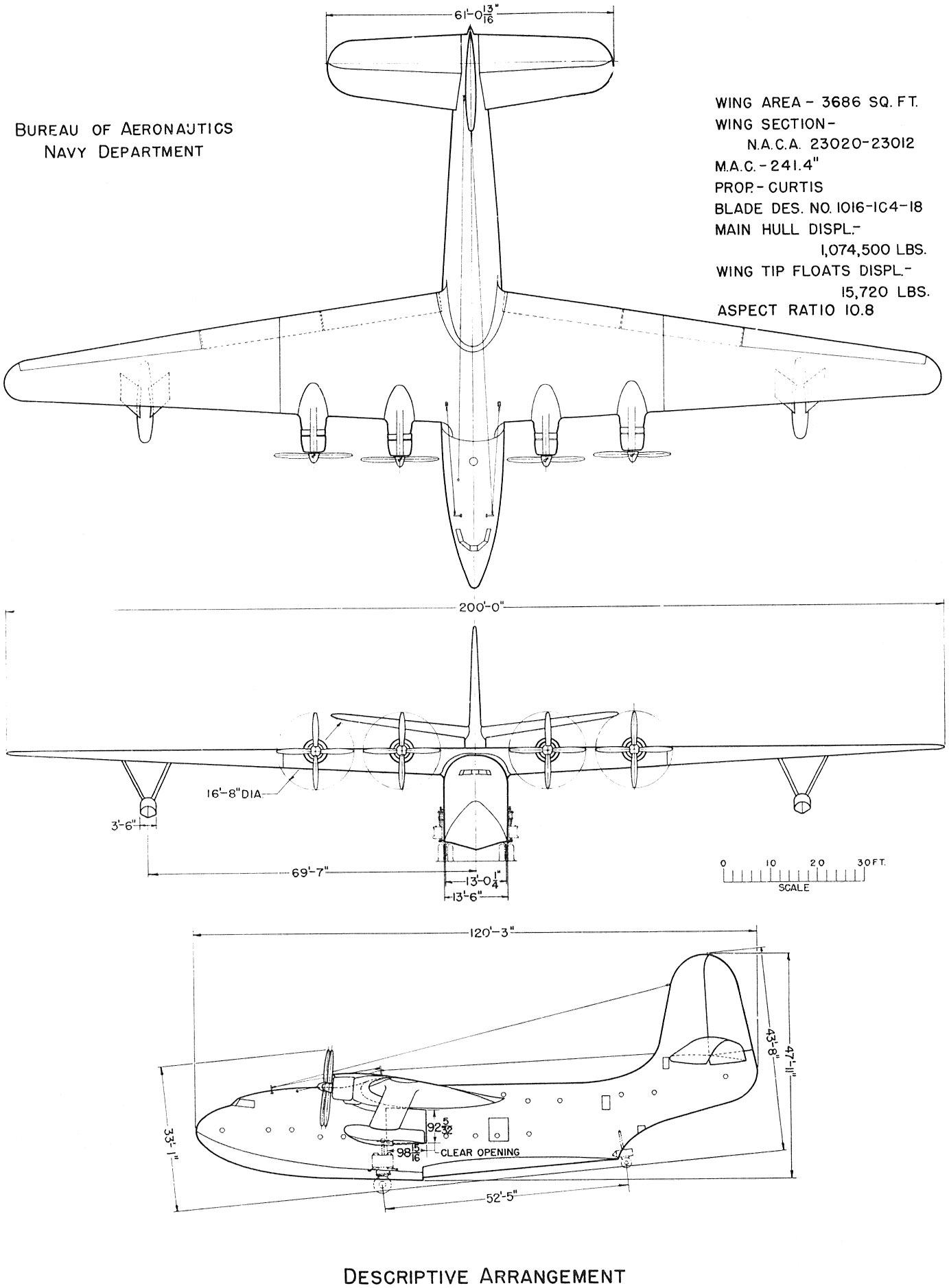
On Monday afternoon, February 10, 2025, I was sitting with a colleague in a meeting in Palm Springs. Suddenly, we heard a loud noise and stepped outside, looking up to see a giant black propeller-driven aircraft overhead with a small P-51 Mustang chase plane accompanying it. Little did I know at the time I had witnessed history: the last flight of the Mars Flying Boat, a storied aircraft dating back to 1945.
Last Airworthy Mars Flying Boat, Philippine Mars, Makes Final Flight To Arizona…And I Looked Up And Saw It!
As World War II groaned on, the Martin Company (which would merge with Lockheed decades later) created an aircraft called the JRM Mars that was intended for use by the U.S. Navy as a maritime patrol bomber. Seven were ultimately manufactured. Over time, the aircraft was used to transport supplies between Hawaii and the Pacific Islands. After being retired from military use in 1956, a pair of the aircraft were used as firefighting water bombers as late as 2015, including to fight California wildfires in 2009.
The last Martin Mars Flying Boat was meticulously maintained in British Columbia over the last several years and recently acquired by the Pima Air and Space Museum in Tucson, Arizona. Over the weekend, the last Flying Boat, called Philippine Mars (each of the Flying Boats had a special name including Hawaii Mars, Philippine Mars, Marianas Mars, Marshall Mars, Hawaii Mars II [after the original Hawaii Mars was destroyed], and Caroline Mars) made its final stop.
First, it traveled to San Francisco, where it spent Sunday night parked at the Alameda Naval Air Station near San Francisco Bay. The following day, it took off, flew over the Golden Gate Bridge, then flew south. As the aircraft approached Palm Springs, California, it was joined by several historic aircraft, including the world’s last remaining airworthy Consolidated PB4Y-2 Privateer (N2871G), a World War II-era patrol bomber, as well as a P-51D Mustang (N44727), which escorted the aircraft for rest of the journey to Lake Pleasant, Arizona.
Sadly, I took no pictures…it was all over in the blink of an eye and I wasn’t even sure what I was watching.

Here are some pictures from the Bay Area:
Coulson’s Aviation Philippine Mars docking at the historic ex-NAS Alameda after the first leg of it’s Retirement Tour. pic.twitter.com/hmtiadbOu1
— Patriotic Capybara (@USAcapybara) February 10, 2025
Historic visit of Philippine Mars at Alameda Naval Air Station after so many years, on its way to the Pima Air & Space Museum for permanent display. #coulsonaviation@CoulsonAviationpic.twitter.com/IZvDeGC24k
— CTP Watcher ✈️ (@WatcherCtp) February 10, 2025
https://twitter.com/CoulsonAviation/status/1889029515696869758
Watch the WWII flying boat the Philippine Mars soar over the Golden Gate Bridge. The 80-year-old plane — which lands and takes off from water — made an 800-mile journey to the Bay Area from British Colombia. It will retire at the Pima Air and Space Museum in Tucson, Arizona. pic.twitter.com/i4okIB7B2X
— ABC7 News (@abc7newsbayarea) February 10, 2025
Here’s a video of Philippine Mars landing at Lake Pleasant, Arizona. From there, it will be partially disassembled before being trucked to Pima Air and Space Museum, where it will join 400 other aircraft on permanent display.
The final moments of Philippine Mars C-FLYK engines running at Lake Pleasant, AZ. #philippinemars#martiamars#cflyk#flynavy#pimaairandspacemuseum#aviationsafari#aviationpreservation#boneyardsafari#aviationadventurespic.twitter.com/3Rg9G6D8K9
— Boneyard Safari (@Boneyardsafari) February 11, 2025
May she rest in peace!





Next road trip you can catch a glimpse of it at the Pima Air and Space Museum in Tucson, AZ.
Isn’t the Hawaii Mars also airworthy or am I wrong?
Hawaii Mars is now on permanent display in British Columbia.
Hawaii Mars went to its forever home in Victoria BC a few months ago.
It had been returned to airworthiness a little bit ahead of Philippines Mars, alongside which it had been stored since the mid teens.
What a magnificent aircraft. How cool that you got a glimpse of the flyby.
I recall years ago seeing several of them moored, sitting in a lake on Vancouver Island, back when they were used for fire bombers. They were always there during summertime drives across the island, I always looked to catch a look as I drove past.
True joy to witness that. A bit of melancholy as well seeing her take one last moment in the sky.
Amazing. I’ve only been on one seaplane ride: Chalks from the port of Miami to Paradise Island in the Bahamas. I’d dearly like to fly one again.
Dang it. I flew out of SFO recently to fly to my cruise, missed this historic event